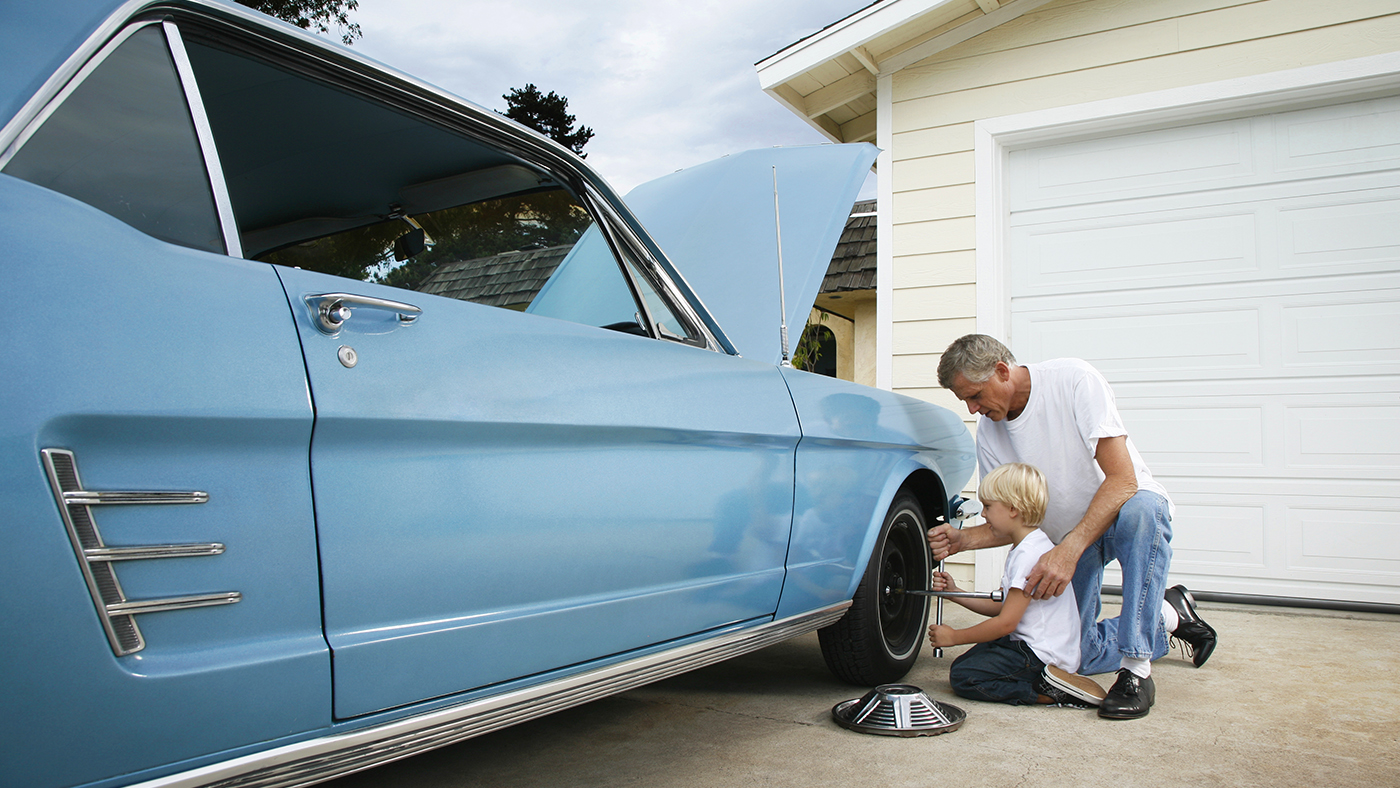How To Care for Your Vintage Car
Keeping your car looking classic involves a combination of restoration and loving care.
 iStock
iStock
We often fall in love with a first car—or a dream car. And once we have that set of wheels, we do what we can to defend it against time and the elements. But what if that dream car is a classic and that fight against time goes back decades?
Keeping a vintage car in top condition can be a challenge—how much so depends on your car’s pedigree. Manufacturing improvements over the years have made today’s vehicles more reliable and maintenance-free than yesterday’s cars, which need special treatment by comparison.
Whether you own a vintage auto (manufactured between 1919 and 1930), a classic car (20 or more years old*) or something newer, you’ll need to consider several factors: restoration, maintenance and cleaning, storage, and use. For each of these factors, consider these care tips.
Restoration Car Care
When restoring a vintage or classic car, the goal is not to upgrade but rather to keep it as close to original as possible.
Classic cars may need parts refinished to achieve period-correct finishes and textures. Vintage cars may need parts fabricated. Machine work, sheet metal and casting molds can create any part needed, including the chassis, suspension and interior hard parts. If your car needs restoration work, it’s a good idea to have it done professionally (not just from a car enthusiast) to preserve its value.
Maintenance and Cleaning Know How
Repairs can be expensive, and regular maintenance can help identify issues and contaminants before they turn into bigger problems.
It’s vital to keep the right kinds and amounts of fluids in your car. Consider replacing the brake fluid once a year to maintain proper brake function.
Clean the car’s exterior to prevent rust and corrosion. Use a metal polish designed specifically for your car’s chrome to protect it and keep it shining. After any car wash, including a hand wash, dry even the tiniest crevices of the car to prevent rust and remove the grime, and always make sure to use a clean high quality microfiber towel or wash mitt. You can also use a reputable auto detailing service.
If you feel any kind of texture on the painted surfaces of your car, it’s likely pollutants adhering to the car’s paint. When wash services and waxing don’t remove them, try using a special product called detailing clay. Once the pollutants and build up are removed, give the car a thorough waxing.
Classic Car Care Storage
Cold temperatures, humidity and direct sunlight can lead to all kinds of problems—the cold can cause mechanical problems, the sun can fade the paint, and humidity can cause rust. Avoid all these problems by preserving your vehicle in a storage garage. The best space to keep your valuable automobile is one that’s dry, ventilated, insulated and temperature regulated.
Use
It may seem counterintuitive to keeping a car “like new,” but cars need to be driven to stay in good working order. A car left in the garage can have its seals and rubber components dry out, causing leaks. Drive your vehicle on a safe, smooth road near your home to keep the engine running.
Find Out Which Classic Car Is Most Like You
Classic cars are full of personality, so answer these questions about yourself to see which car shares your traits.